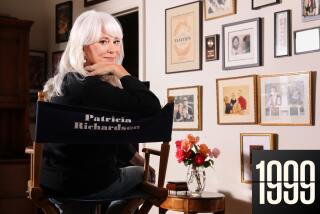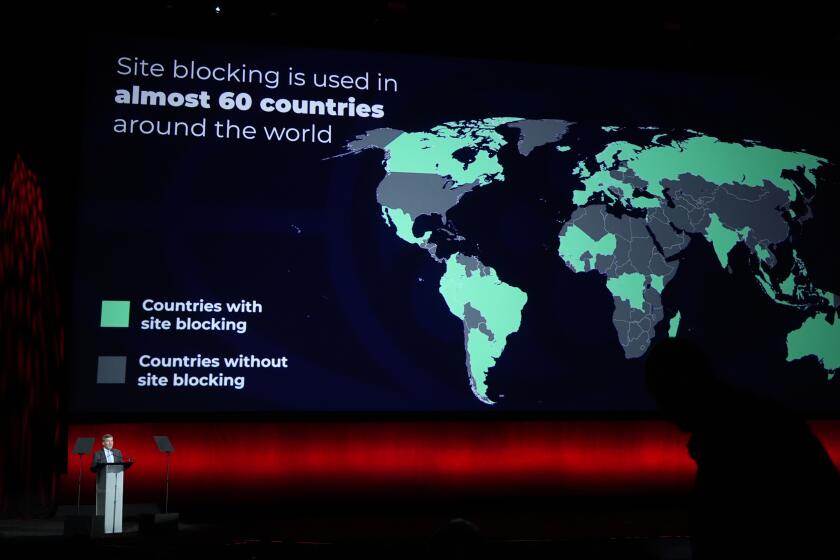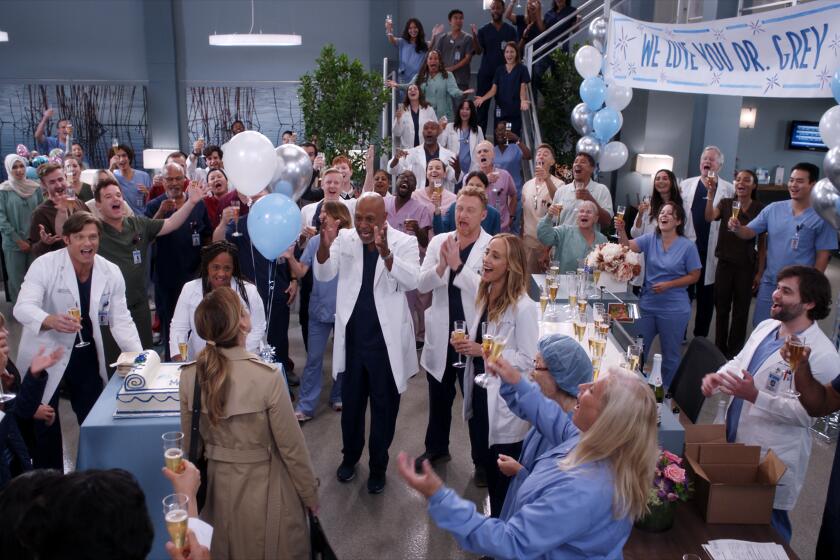Review: ‘The Great War’s’ portrayal of WWI battlefield horror proves ingenious
Last year marked the 100th anniversary of the start of World War I — a hellish anniversary, to be sure, but one that couldn’t go unmarked. Observe how the geopolitical consequences of that conflagration are savagely playing out in the Middle East, where national boundaries decided upon by the Allied victors following the brutal logic of their own economic interests have led to a century of strife and instability in the region.
Though historians are still arguing over the principal cause (apparently it’s a good deal more complicated than the multiple-choice answer “the assassination of Austrian Archduke Franz Ferdinand”), there is no debating the calamitous waste of life, with the military and civilian death toll nearing 20 million in some estimates.
How can such overwhelming atrocity be understood? In small increments only, as the “The Great War,” an ingenious live animation film created by Dutch theater company Hotel Modern and composer Arthur Sauer, artfully demonstrated this weekend.
The production, presented at REDCAT for three performances, simulated the battlefield horror through the deployment of miniature toy theater objects projected onto a screen. A table spread thick with potting soil was watered liberally to re-create the nightmare of the trenches.
The power of the images — miniature soldiers trekking through mud littered with body parts, fire tearing through encampments, mustard gas leaving everything silent in its wake — was astonishing given the banality of the materials being used.
The audience’s attention was split between the screen and the stage activity behind it. The art retained its mystery, though the process of creation could be discerned in dim light. (After the show, audience members were invited onto the stage to get a closer look at how it was all done.)
The four-person ensemble moved with the discretion of Bunraku puppeteers. Herman Helle, Arlène Hoornweg and Pauline Kalker took care of the harrowing visuals and narration. Sauer, brilliantly manning an orchestral station of his own devising, was responsible for the demonic sound design.
The start of the war was dispatched in a preface performed on cartons covered with a map. To review the alliances, countries were designated with different-size cigars.
Letters from the front were read to provide eyewitness accounts of the misery. The pale flesh of the forlorn soldier figurines contrasted starkly with the wet dirt. The growling of the war machine heightened the sense of physical vulnerability. Death was pervasive, but the fear of dismemberment and the guilt over dishonored corpses seemed to pose greater challenges to the psyche of soldiers.
“War Horse,” the Tony-winning British import, brought the murderousness of World War I to life through breathtaking animal puppetry. “The Great War,” working on a much smaller and far less commercial scale, doesn’t set out to dazzle us in the same way. The audience was never allowed to lose sight of how the production’s scenic effects were produced. Thus, commodification, always a danger when transposing human tragedy to art, was cut off. The dirtiness of this historical re-creation implicated us all.
At the end, a mound of rotting bodies was turned into a ghoulish stew by snow and rain. Eventually, the corpses sank into the ground. Trees (parsley sprigs magically deployed) sprouted up in this field, oblivious to the carnage.
Nature has the final word, if not the last laugh. The technology that made World War I so lethal is now turned against the planet itself. “The Great War,” a modest, handcrafted multimedia gem, provoked such disproportionately big and chilling thoughts.
More to Read
The biggest entertainment stories
Get our big stories about Hollywood, film, television, music, arts, culture and more right in your inbox as soon as they publish.
You may occasionally receive promotional content from the Los Angeles Times.











